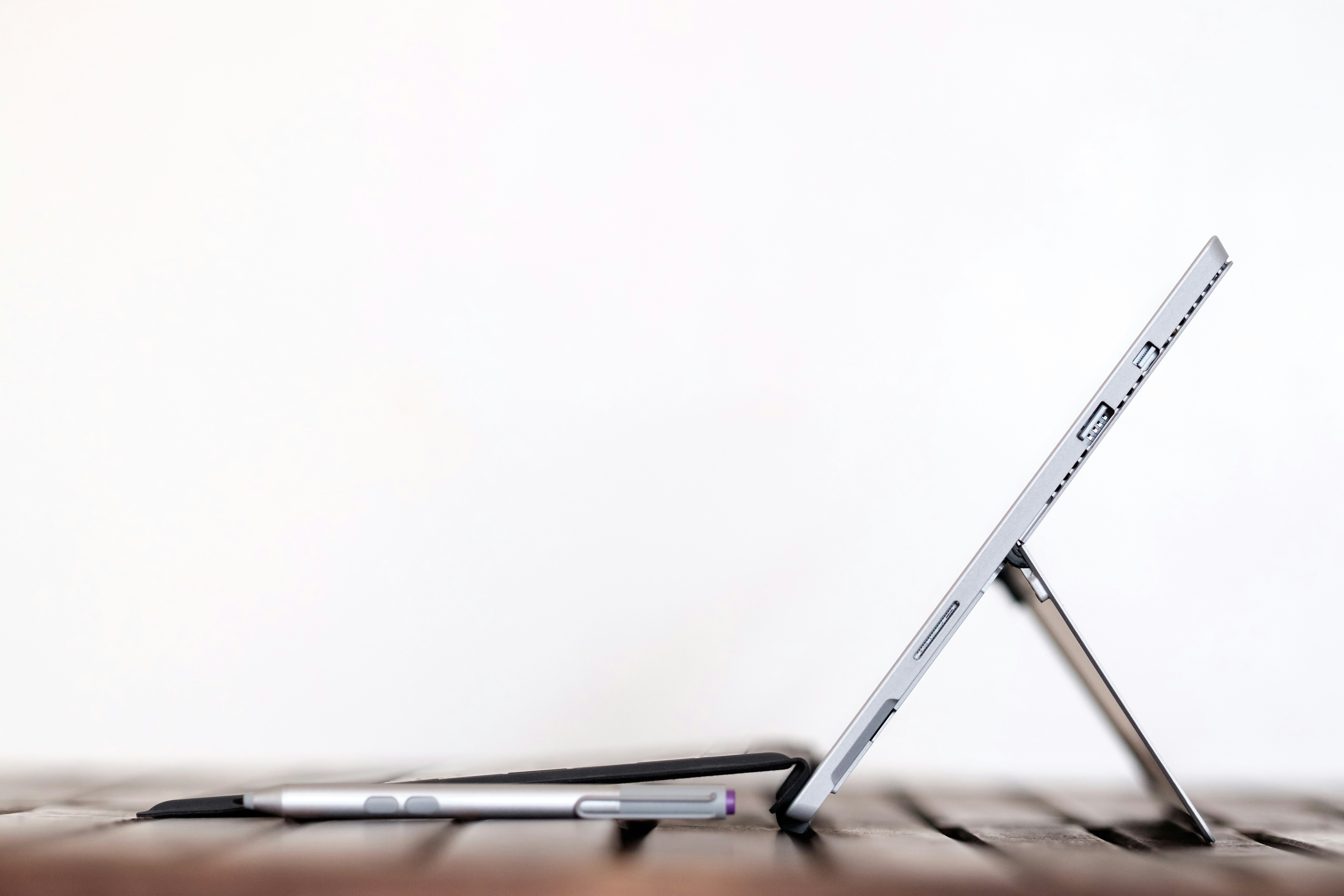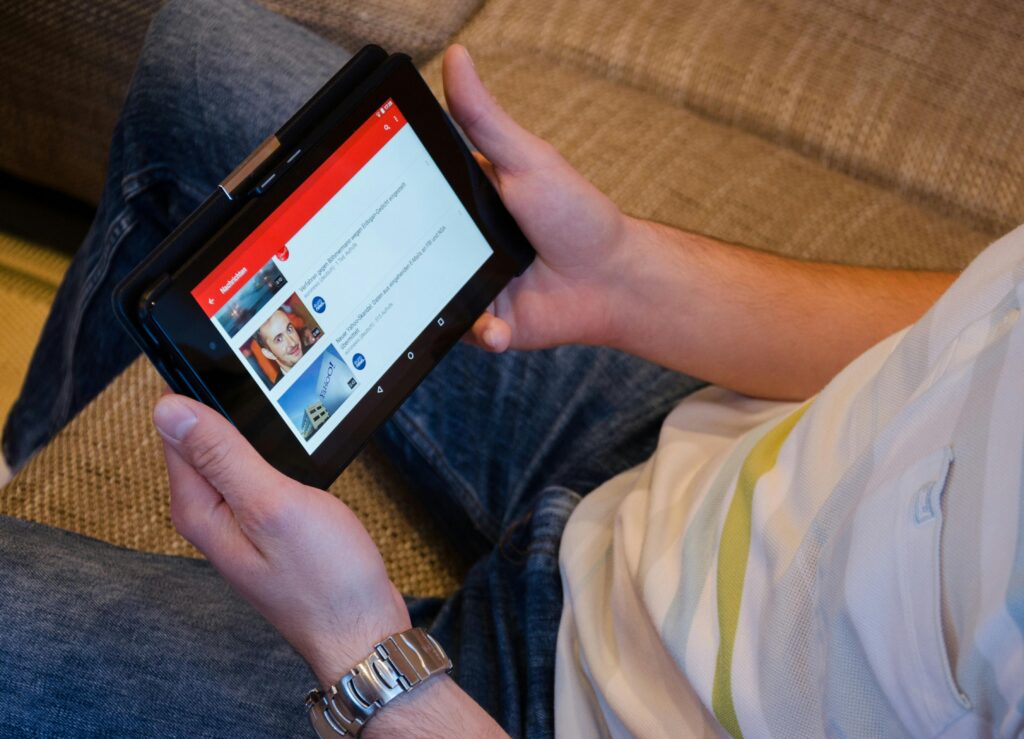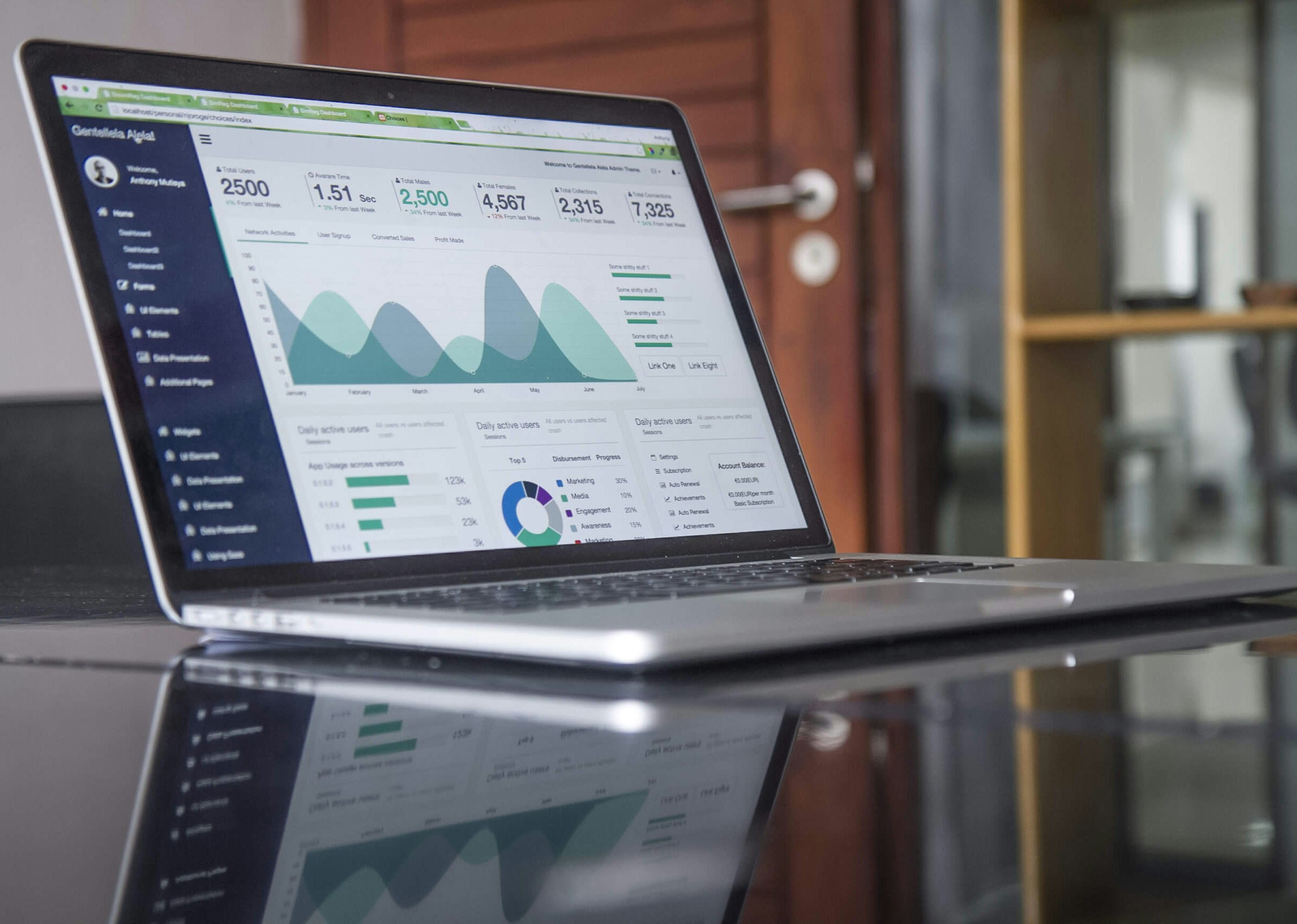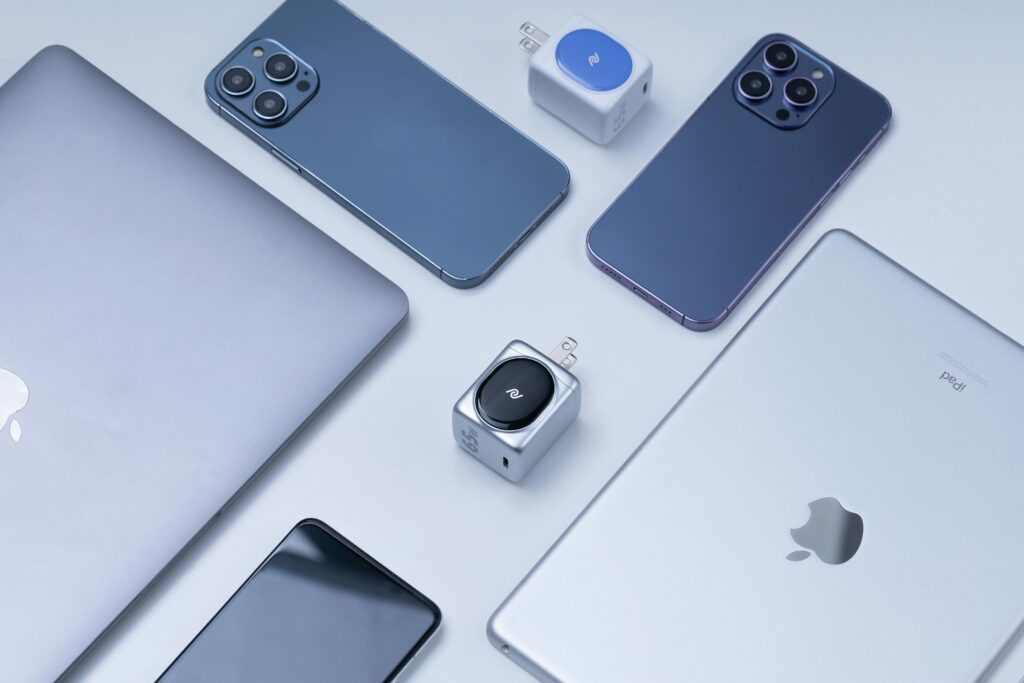Introduction to Tablets and Laptops for Professionals
In recent years, the distinctions between tablets and laptops have become increasingly blurred, particularly in professional environments. The rise of tablets has transformed the way professionals approach their daily tasks, leading to a notable shift in preferences toward more portable and versatile devices. As remote work becomes more common, the demand for efficient, adaptable tools that cater to a variety of needs has made both tablets and laptops viable options for professionals seeking to optimize their workflows.

Tablets, with their sleek designs and lightweight forms, offer an appealing alternative to traditional laptops. Equipped with touchscreens and an array of productivity applications, tablets provide a more intuitive user experience. They are particularly well-suited for tasks that benefit from mobility, such as note-taking during meetings, sketching ideas, or reviewing documents on the go. Furthermore, the growing ecosystem of accessories, including detachable keyboards and stylus pens, has enhanced the functionality of tablets, making them increasingly capable of handling tasks once reserved for laptops.
Conversely, laptops remain a staple for many professionals, especially those requiring robust performance for intensive applications. They typically offer greater processing power, larger storage capacities, and a more comprehensive range of software compatibility. For professionals engaged in graphic design, complex data analysis, or software development, the benefits of laptops can outweigh the portability of tablets. Additionally, laptops tend to provide a familiar computing experience, with a full-sized keyboard and larger screen, which can be advantageous for extended work sessions.
This evolving dynamic between tablets and laptops necessitates careful consideration as professionals assess their device needs. Understanding the unique features and limitations of each type of device is essential for making informed decisions in a world where work increasingly transcends traditional office boundaries.
Advantages of Using a Tablet
Tablets have emerged as a popular choice for professionals seeking a versatile and efficient device for their work-related tasks. One of the most notable advantages of using a tablet is its portability. Weighing significantly less than traditional laptops, tablets can easily fit into a briefcase or even a large pocket, making them an ideal option for professionals who are frequently on the move. This lightweight design allows users to maintain productivity while traveling, whether during commutes, client meetings, or business trips.

Ease of use is another crucial factor that contributes to the appeal of tablets. With their touch-screen interfaces and user-friendly operating systems, tablets facilitate quick navigation through applications and documents. Tasks such as emailing, note-taking, or conducting research can be performed seamlessly with a few taps or gestures. For instance, professionals can employ a stylus for handwritten notes during meetings, which can then be converted into digital text effortlessly.
Battery life is an essential consideration for professionals who rely on their devices throughout the day. Tablets typically boast impressive battery longevity, often lasting between 8 to 12 hours on a single charge. This extended battery life ensures that users can complete their tasks without the constant need to recharge, which can be particularly beneficial in environments where access to power outlets may be limited.
The availability of applications further enhances the functionality of tablets for professional purposes. Various productivity apps cater to fields ranging from project management to graphic design, enabling professionals to tailor their devices to suit their specific needs. For example, a marketing professional might utilize design apps to create promotional materials, while a project manager may rely on task management applications to streamline workflows. In conclusion, the combination of portability, user-friendliness, impressive battery life, and a diverse app ecosystem makes tablets an attractive alternative for on-the-go professionals looking to complete their tasks efficiently.
Disadvantages of Using a Tablet
While tablets offer various advantages, professionals should also be aware of their disadvantages compared to laptops. One significant limitation of tablets is performance. Although many tablets come equipped with robust processors, they often do not match the capabilities of a high-performance laptop. This discrepancy can become particularly apparent when handling resource-intensive tasks, such as graphic design, data analysis, or software development. Tablets may struggle to run heavy applications smoothly, leading to a less efficient workflow for professionals.
Another challenge is the limitations in multitasking. Tablets generally have a more restrictive interface, which can hinder the ability to run multiple applications simultaneously. While some tablets offer a split-screen mode, it often does not provide the same flexibility as a laptop’s desktop environment. This restriction can frustrate users who need to switch between applications swiftly or require numerous windows open for their work, potentially hampering overall productivity.
Moreover, the lack of traditional software applications can be a significant drawback for professionals accustomed to specific desktop applications. Many industry-standard programs are not available on tablet platforms or have limited features compared to their laptop counterparts. Consequently, professionals may find themselves unable to execute their tasks adequately or facing compatibility issues with file formats.
File management can also pose a challenge with tablets. While cloud storage solutions have become mainstream, many professionals still rely heavily on local file management. Tablets often lack the comprehensive file management systems found in laptops, making it difficult for users to organize, access, and transfer files seamlessly. This limitation can lead to a disjointed experience for professionals who prioritize efficiency and organization in their workflow.
Advantages of Using a Laptop
When considering the needs of professionals, the advantages of using a laptop over a tablet become abundantly clear. One of the foremost benefits is the superior processing power that laptops typically provide. Equipped with advanced processors, laptops are capable of handling more demanding applications and multitasking with ease. This is particularly beneficial for professionals who require robust computing capabilities for tasks such as data analysis, graphic design, or software development.
Another significant advantage is the presence of a full keyboard. While tablets may offer external keyboard options, laptops come with integrated keyboards that allow for more comfortable and efficient typing. For roles that demand extensive writing or coding, such as content creation or programming, the tactile feedback from a laptop keyboard can enhance productivity and reduce strain during prolonged usage.

The larger screen size of laptops also contributes to their appeal. A bigger display enables professionals to view multiple windows side by side, facilitating easier comparisons and multitasking. This is especially advantageous in fields such as project management, where monitoring various aspects of a project simultaneously is often required.
Moreover, laptops possess the capability to run full desktop applications, which can be pivotal for professionals who rely on specialized software for their work. Applications like Adobe Creative Suite, AutoCAD, or comprehensive spreadsheet tools like Microsoft Excel often require the full-featured environment provided by laptops, as opposed to mobile adaptations available on tablets.
In instances where data security and organizational policies dictate device usage, laptops frequently offer better security features, such as encryption and enterprise-level management tools. This is essential for safeguarding sensitive information, ensuring compliance with regulatory standards, and protecting company assets.
Overall, for professionals whose tasks include extensive typing, require high processing capabilities, and utilize full-featured software, laptops present a range of advantages that cater to these needs effectively.
Disadvantages of Using a Laptop
While laptops have become an essential tool for professionals, they come with several disadvantages that can affect usability and convenience. One of the primary concerns is portability. Although laptops are designed to be mobile, they are significantly heavier and bulkier than their tablet counterparts. This can create challenges for professionals who need to travel frequently or work in various locations. Carrying a laptop along with additional accessories such as chargers and peripherals can be cumbersome, which may hinder productivity during travel.
Another drawback of laptops is battery life. Many modern laptops, especially those with powerful specifications, tend to consume more power, resulting in shorter battery longevity. Professionals relying on their laptops for extended periods, particularly in situations where power outlets are not readily available, may find themselves needing to recharge frequently. This limitation can be a considerable inconvenience in agile work environments.
Additionally, the cost of laptops can often be higher than that of tablets. High-end laptops with advanced features are usually more expensive and may also require additional investment in software, accessories, and maintenance. This can be a significant consideration for professionals operating on a budget or those who need to manage expenses tightly.
Comfort and ergonomics represent another challenge for laptop users. Using a laptop for prolonged periods can lead to discomfort due to the non-adjustable screen height and smaller keyboard. These factors can lead to issues such as neck strain or repetitive stress injuries, particularly for professionals who spend long hours working at their desks or while traveling. Overall, these disadvantages warrant careful consideration for professionals when selecting the appropriate device for their needs.
Comparative Analysis of Specific Devices
In the realm of professional devices, the Microsoft Surface Pro 9, Apple iPad Pro (11-inch), and Samsung Galaxy Tab S7 stand out as noteworthy contenders. Each device is tailored to specific user preferences and professional requirements, making them suitable for various tasks and workflows.
The Microsoft Surface Pro 9 is an exceptional 2-in-1 device that seamlessly transitions between a laptop and a tablet. It boasts a 13-inch PixelSense display, providing an impressive resolution of 2880 x 1920 pixels, ensuring vibrant visuals for presentations and design work. Powered by the latest Intel Core processors, this device is a powerhouse suitable for professionals needing computational efficiency for demanding applications. Its compatibility with the Surface Pen enhances its utility in creative tasks, making it a preferred choice for graphic designers, architects, and note-takers.
- The convenient slate design offers portability and productivity simultaneously
- 13″ screen size and 2880 x 1920 resolution enable smooth visuals, easy content reading, and overall a great user experie…
- 15.50 Hours battery run time helps you stay unwired and work longer non-stop
In contrast, the Apple iPad Pro (11-inch) delivers unparalleled performance in a sleek design. The M1 chip integrates advanced processing capabilities, resulting in lightning-fast performance for multitasking and high-end applications. With a Liquid Retina display featuring ProMotion technology, tasks such as video editing or graphic design become incredibly fluid and responsive. Notably, the iPad Pro is particularly appealing to creative professionals, including artists and videographers, due to its array of apps optimized for creative workflows and its compatibility with the Apple Pencil.
- WHY IPAD PRO — iPad Pro is the ultimate iPad experience in an impossibly thin and light design. Featuring the breakthrou…
- BUILT FOR APPLE INTELLIGENCE—Apple Intelligence is the personal intelligence system that helps you write, express yourse…
- 11-INCH ULTRA RETINA XDR DISPLAY — Ultra Retina XDR delivers extreme brightness and contrast and exceptional color accur…
Lastly, the Samsung Galaxy Tab S7 stands out with its versatility, offering an impressive AMOLED display and the S Pen, which supports a natural writing experience. This Android device is ideal for professionals who enjoy customization and flexibility, as it allows users to switch between productivity tasks and entertainment seamlessly. With its DeX mode, the Galaxy Tab S7 transforms into a desktop-like experience, making it suitable for business professionals who thrive on multitasking.
- PC PERFORMANCE. TABLET PORTABILITY: Transform your tablet into a PC experience with DeX mode and the optional keyboard¹ …
- ENTERTAINMENT, UPGRADED: Experience cinematic viewing with larger edge-to-edge displays, TFT LCD screen, and AKG quad sp…
- REDESIGNED S PEN INCLUDED: With improved 9ms Pen latency, the redesigned S Pen can control presentations and take notes …
Each of these devices showcases unique features and specifications, ultimately catering to different professional landscapes. As a result, the choice between them will largely depend on the specific needs and workflow preferences of the user.
Cost Considerations: Tablets vs. Laptops
When evaluating the cost implications between tablets and laptops, professionals must consider not only the initial purchase price but also additional expenses that may accrue over time. For instance, while a tablet can initially appear more budget-friendly—with prices starting as low as $150 for basic models—one must also factor in the costs of essential accessories. Many tablets require a separate keyboard, which can add an additional $50 to $150, depending on the type and quality selected. Furthermore, protective cases and styluses, particularly for those in fields like design or writing, can further inflate the total expenditure.
On the other hand, laptops often have a higher starting price, generally ranging from $400 to $1,500, depending on specifications and brand. However, they typically include full-sized keyboards as standard features, which eliminates the need for an additional purchase. Laptops are also often equipped with better processing power and larger storage capacity, making them more suitable for demanding tasks such as programming or graphic design. This additional functionality can justify the higher initial investment.
Moreover, professionals should also consider software costs. While many tablets support productivity applications, certain high-end software may be available only on laptops. This can result in further costs if tablets are deemed insufficient for particular tasks. Additionally, a laptop often runs more comprehensive operating systems, providing greater software compatibility, which could be essential for professionals in sectors that rely on specialized programs.
Ultimately, when choosing between tablets and laptops, the decision hinges on understanding not only the sticker price but also the total cost of ownership, which includes accessories, software, and usage requirements. It is prudent for professionals to analyze their specific needs against the potential expenses of each device type before making a decision.
Deciding Factors: What to Consider for Your Needs
When professionals are faced with the decision of choosing between a tablet and a laptop, several critical factors come into play that can influence their choice. Understanding personal preferences is paramount. Some individuals may favor the intuitive touch interface of a tablet, while others might prefer the tactile feedback of a laptop keyboard. This personal inclination often determines overall user satisfaction, potentially impacting productivity levels.
Another key consideration is the type of work involved. Professionals engaged in tasks that require extensive typing, data entry, or usage of specialized software may lean toward a laptop, given its robust performance and comprehensive operating systems. Conversely, industries that thrive on visual presentations, note-taking, or mobile applications might find tablets to be more advantageous due to their portability and ease of use in different environments.
Mobility requirements also significantly influence the decision-making process. For individuals who frequently travel or work on the go, a lightweight tablet may be more suitable due to its compact size and long battery life. Tablets often offer the ability to work seamlessly in varied environments, whether that means editing documents on a plane or making presentations in a client meeting. On the other hand, for professionals who operate from a fixed location or require multiple peripherals, a laptop—often equipped with various ports and larger displays—might serve their needs better.

To assist readers in evaluating their unique requirements effectively, a checklist can be beneficial. Consider the following: What is the primary function required? Is extensive software usage necessary? How often will you need to transport the device? Are battery life and screen size important to your workflow? By reflecting on these questions, professionals can better assess whether a tablet or a laptop aligns with their specific scenarios and preferences, paving the way for an informed decision.
Conclusion: Making the Right Choice for Professionals
In the discussion surrounding the choice between tablets and laptops for professional use, several key factors have emerged that can significantly influence a user’s decision. Professionals are often faced with the dilemma of selecting the right device based on their specific work requirements, personal preferences, and mobility needs. Each device brings with it a unique set of advantages and limitations tailored to different uses.
For those who prioritize portability, ease of use, and battery life, tablets present an appealing option. Their lightweight design and touch interface make them ideal for on-the-go tasks such as note-taking, quick email responses, or viewing presentations. Tablets, especially when paired with detachable keyboards, can serve as effective tools for professionals who require a balance between casual and more serious computing tasks.
On the other hand, for users whose work necessitates heavy-duty applications, extensive multitasking, or complex data management, laptops continue to be the preferred choice. The expanded hardware capabilities and larger screens of laptops cater to professions that demand power, such as software development, graphic design, and video editing. Furthermore, the traditional keyboard layout of laptops can enhance typing efficiency for tasks requiring extensive written communication.
Ultimately, the choice between a tablet and a laptop is determined by individual work scenarios. Professionals in dynamic environments may benefit from the adaptability of a tablet, while those in more stable, demanding roles might find a laptop to be indispensable. It is crucial for users to evaluate their unique job requirements, daily routines, and the type of software they rely on to determine which device aligns best with their needs.



